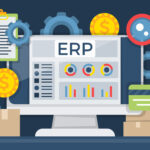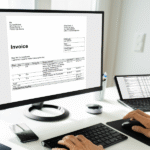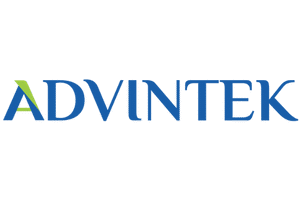Employee perks and benefits are an aspect of today’s workplace that extend beyond salary payments – they also contribute to employee satisfaction and are key for attracting and retaining top talent within a company setting. However, handling these benefits effectively can pose challenges, for both employers and employees. In this article we will delve into the details of work related benefits, the obstacles linked to reimbursement procedures and the game changing impact of invoicing systems.
Understanding Employment Perquisites and Benefits
What Are Employment Perquisites?
Employment perquisites, often referred to as perks, are benefits provided to employees in addition to their salaries. These can range from financial benefits to non-cash rewards that enhance the overall employment experience. Examples include:
- Coverage for utility bills or parking fees.
- Memberships to professional clubs or gyms.
- Meal, travel, or petrol allowances.
- Professional subscriptions such as industry journals or certification renewals.
These benefits offer financial relief to employees while providing them with tools and services that enhance productivity and job satisfaction.
The Difference Between Perquisites and Standard Benefits
While standard benefits like health insurance and retirement contributions are common, perquisites offer additional advantages that are often tailored to an employee’s role or personal preferences. For instance, a company-provided car or a flexible work-from-home allowance might be exclusive to certain job levels or departments. Understanding the nuances between these categories helps employers structure a competitive compensation package.
The Legal Framework Surrounding Perquisites
Employee benefits, including perquisites, are subject to various legal and tax regulations. Employers must report these perks accurately for tax purposes to avoid penalties. Employees, on the other hand, are often required to document these benefits, especially when they involve expense claims, to ensure compliance with tax laws.
The Expense Claim Process: How It Works
Current Practices in Expense Claims
Traditionally, employees are required to submit claims to their employers for any work-related expenses. This process typically involves:
- Collecting receipts or invoices for expenses incurred.
- Filling out claim forms and attaching relevant documentation.
- Awaiting employer approval before reimbursement.
Though straightforward, this system can be cumbersome, especially for employees who frequently incur expenses on behalf of their employers.
Challenges in the Traditional Process
Manual expense claims often lead to inefficiencies. Employees may misplace receipts or forget to submit claims on time, leading to delays in reimbursement. For employers, verifying claims and ensuring they meet tax requirements can be time-consuming and prone to errors, impacting financial reporting and employee satisfaction.
The Role of Digital Solutions in Streamlining Processes
With advancements in technology, companies are increasingly adopting digital tools to manage expense claims. These solutions automate the submission, approval, and reimbursement process, reducing administrative burdens and enhancing transparency.
The Implementation of e-Invoicing in Expense Claims
What Is e-Invoicing?
e-Invoicing is a digital billing method that allows invoices to be issued, received, and processed electronically. Unlike traditional paper invoices, e-Invoices streamline financial transactions by providing real-time validation and integration with accounting systems. This shift not only simplifies the expense claim process but also enhances accuracy and compliance.
Transitioning to e-Invoices: Key Steps for Employers
To transition effectively, employers need to:
- Update their internal policies to incorporate e-Invoicing.
- Ensure that suppliers can issue e-Invoices with the necessary details.
- Train employees on the new submission process, including how to request e-Invoices during transactions.
By following these steps, businesses can achieve a smoother transition while maintaining compliance with regulatory requirements.
Benefits of e-Invoicing for Employees
For employees, e-Invoicing removes much of the hassle associated with expense claims. There’s no need to keep track of physical receipts, and claims can be submitted faster. Additionally, e-Invoices are often processed more quickly, resulting in quicker reimbursements.
Addressing Challenges in e-Invoicing
Issuing e-Invoices in the Employer’s Name
One of the challenges of e-Invoicing is ensuring that invoices are issued in the employer’s name for tax reporting purposes. The process typically involves:
- Employees requesting the supplier to issue the invoice under the employer’s name.
- Providing the necessary company details to the supplier.
- Ensuring the validated invoice is submitted as part of the claim.
In cases where this is not feasible, employees can still submit invoices issued in their name, provided the transactions align with company policies.
Exceptions in Foreign Transactions
When dealing with foreign suppliers, obtaining e-Invoices can be challenging. The Inland Revenue Board of Malaysia (IRBM) acknowledges this and allows businesses to rely on foreign receipts or invoices as valid proof of expense. This flexibility simplifies expense management for companies operating internationally.
Concessions Provided by the IRBM
To further ease the transition, the IRBM offers concessions that accept traditional documentation alongside e-Invoices for certain transactions. This ensures businesses remain compliant without disrupting their operations.
Best Practices for Employers to Manage Perquisites and Benefits
Establishing a Clear Policy
A well-documented perquisite policy ensures transparency and consistency. It should outline:
- Types of expenses eligible for reimbursement.
- Documentation required for claims.
- Procedures for submitting and approving claims.
Clear guidelines help both employers and employees navigate the benefits process with ease.
Training Employees on e-Invoicing
Implementing new systems like e-Invoicing requires proper training. Employers should provide resources and support to help employees understand:
- How to request and submit e-Invoices.
- The importance of accurate documentation for compliance.
Regular training sessions can address common issues and ensure a seamless adoption.
Leveraging Technology to Simplify Compliance
Digital platforms that integrate e-Invoicing with payroll and accounting systems can significantly reduce the administrative burden. These tools offer automated tracking, reporting, and auditing capabilities, ensuring businesses stay compliant while minimizing manual errors.
The Future of Employee Benefits Management
The Rise of Digital-First Financial Processes
As technology evolves, businesses are moving towards fully digital financial processes. e-Invoicing is just the beginning, with innovations like AI-powered expense tracking and blockchain-based audit trails on the horizon. These advancements promise even greater efficiency and security in managing employee benefits.
Potential Innovations in Employee Perks
The future of employee benefits lies in personalization. Companies are exploring ways to offer customized perks that cater to individual needs, such as flexible wellness programs, on-demand learning platforms, and even financial planning tools.
Advintek’s Role in Revolutionizing Employee Benefits
Advintek stands at the forefront of this digital transformation. By providing a robust e-Invoicing platform, Advintek simplifies the process of managing perquisites and ensures compliance with regulatory standards. Our solutions empower businesses to focus on what matters most: their people.
Conclusion
Advintek is dedicated to helping businesses navigate the complexities of employee benefits. With our cutting-edge e-Invoicing platform, we streamline expense claims, ensure compliance, and enhance operational efficiency. Trust Advintek to transform your benefits management and provide your employees with the seamless experience they deserve.









